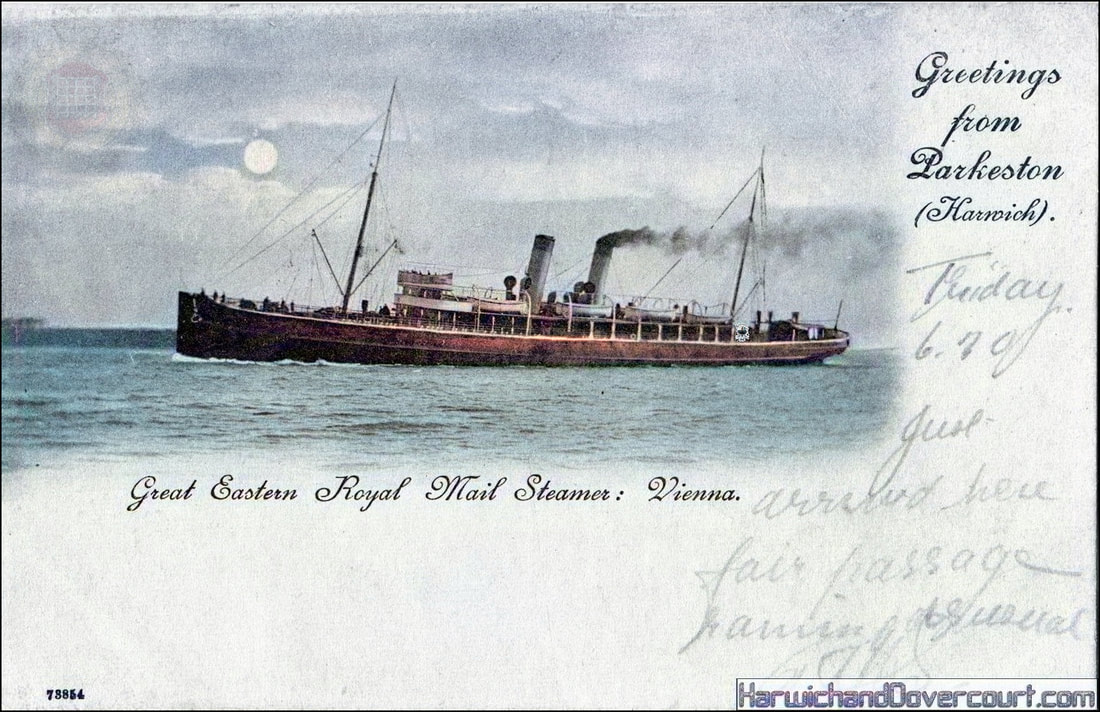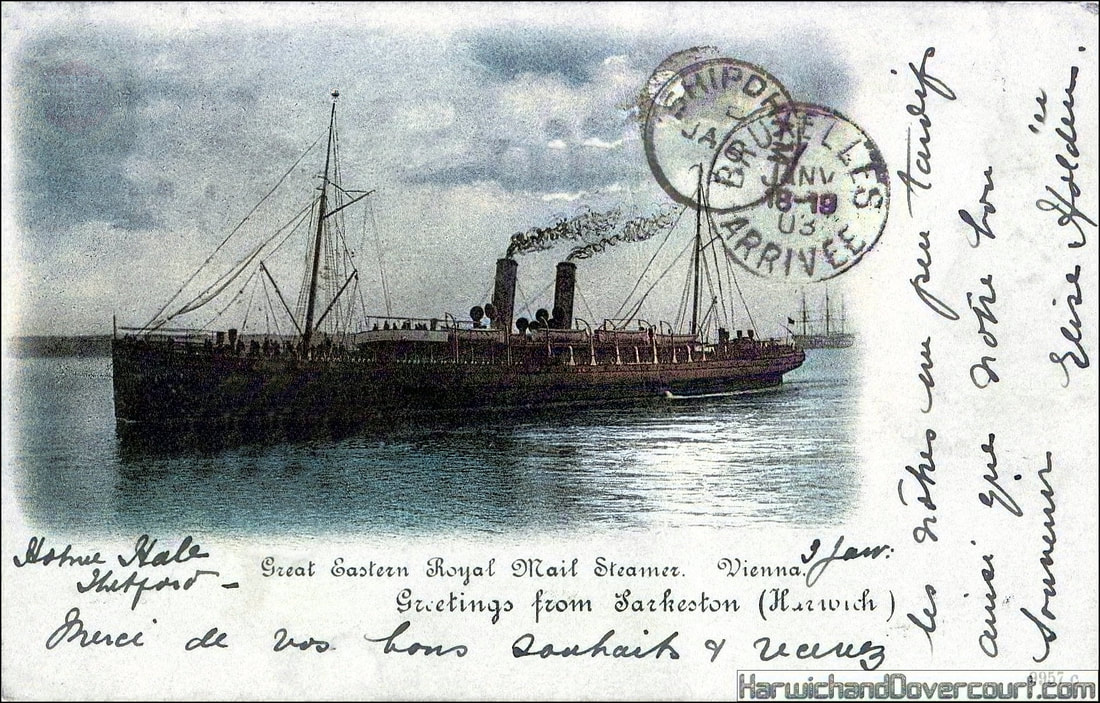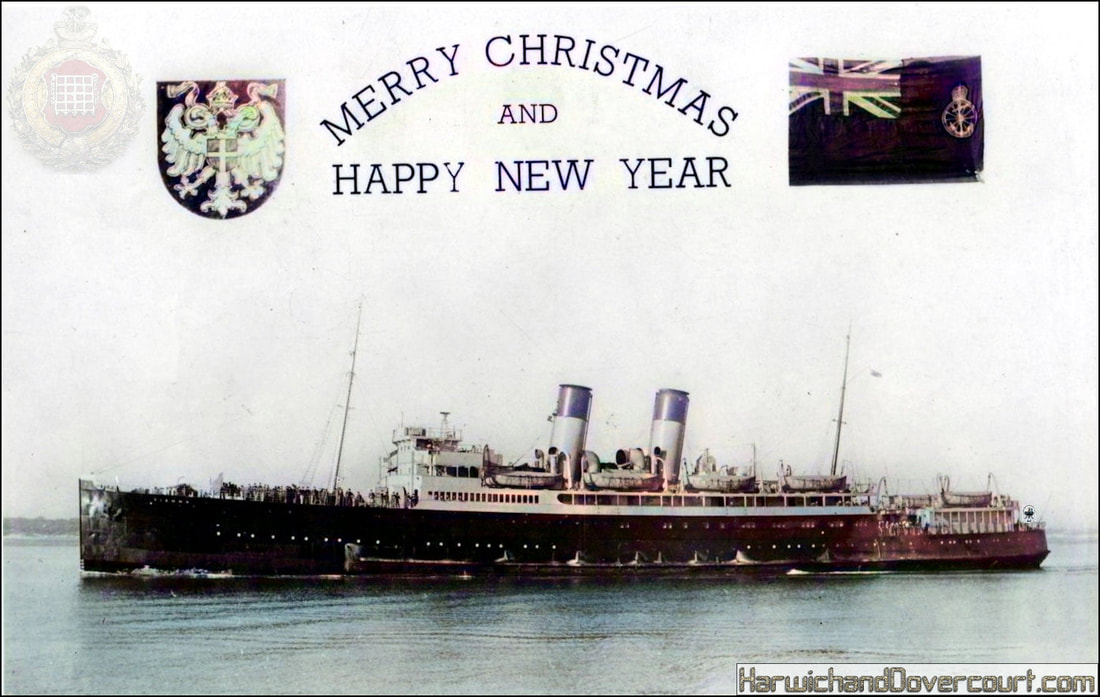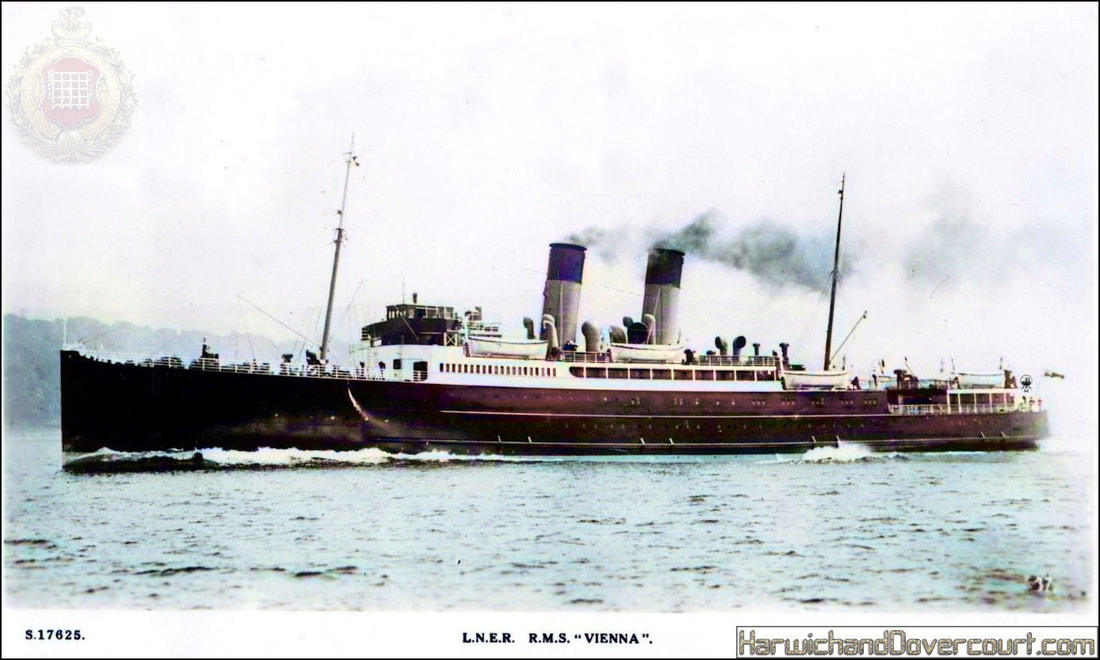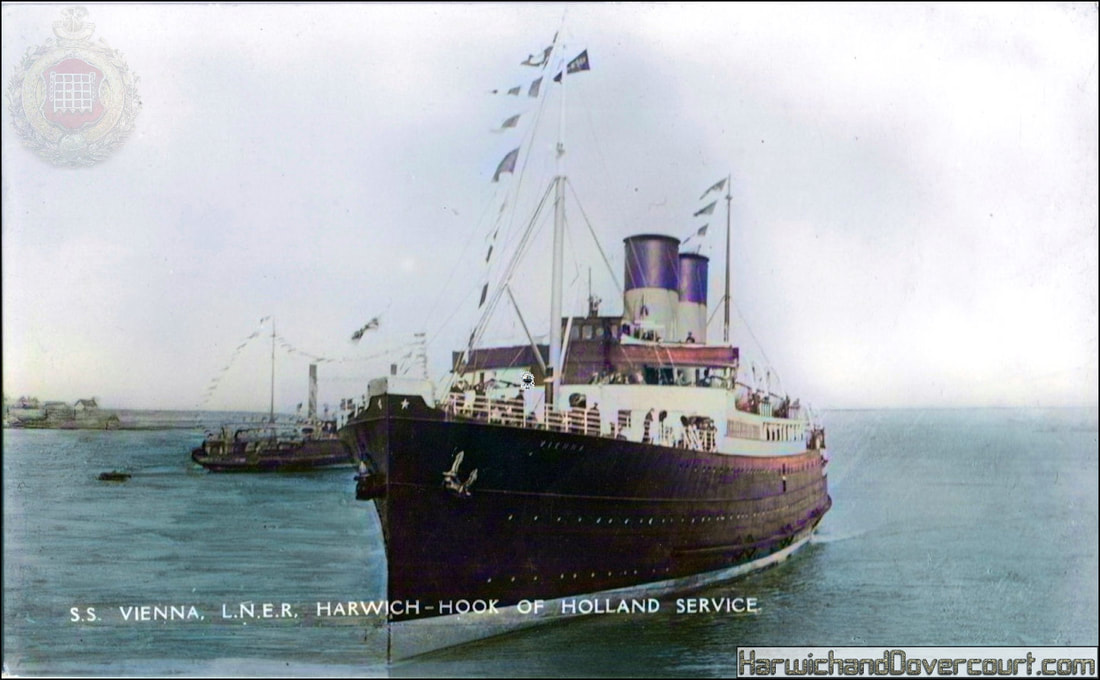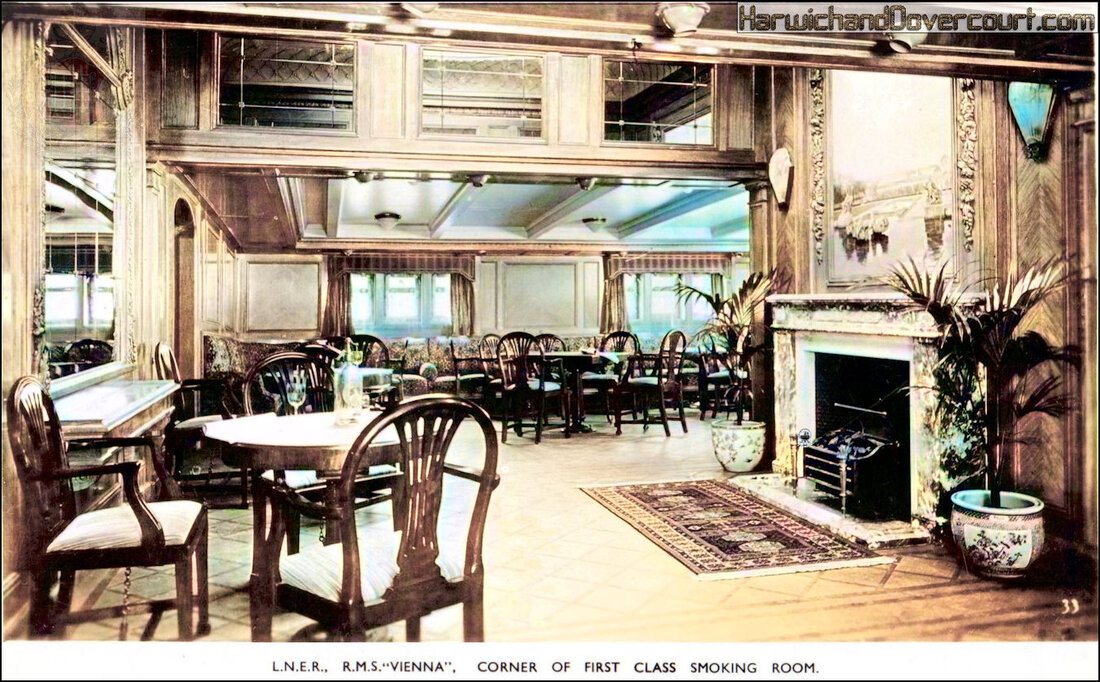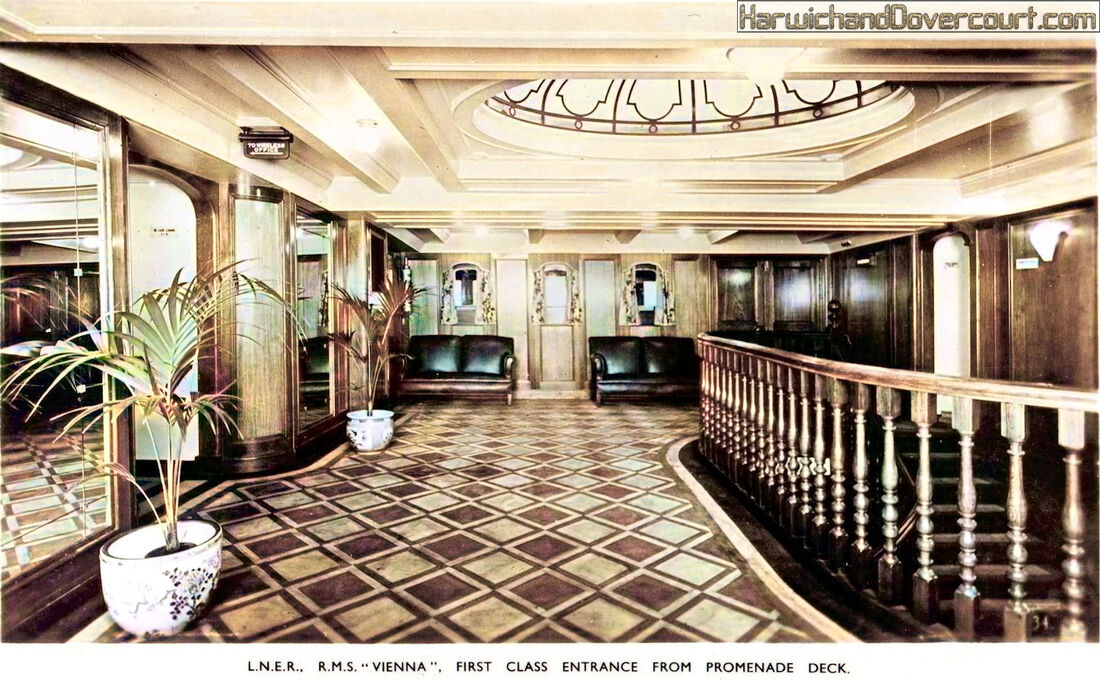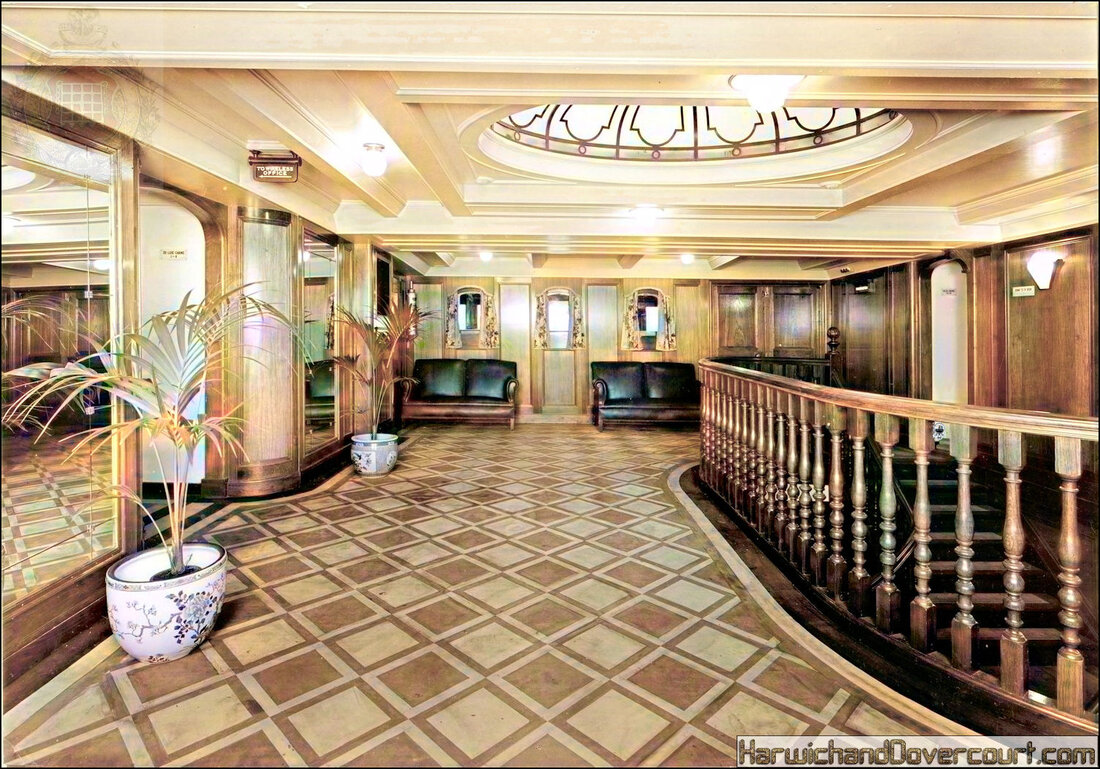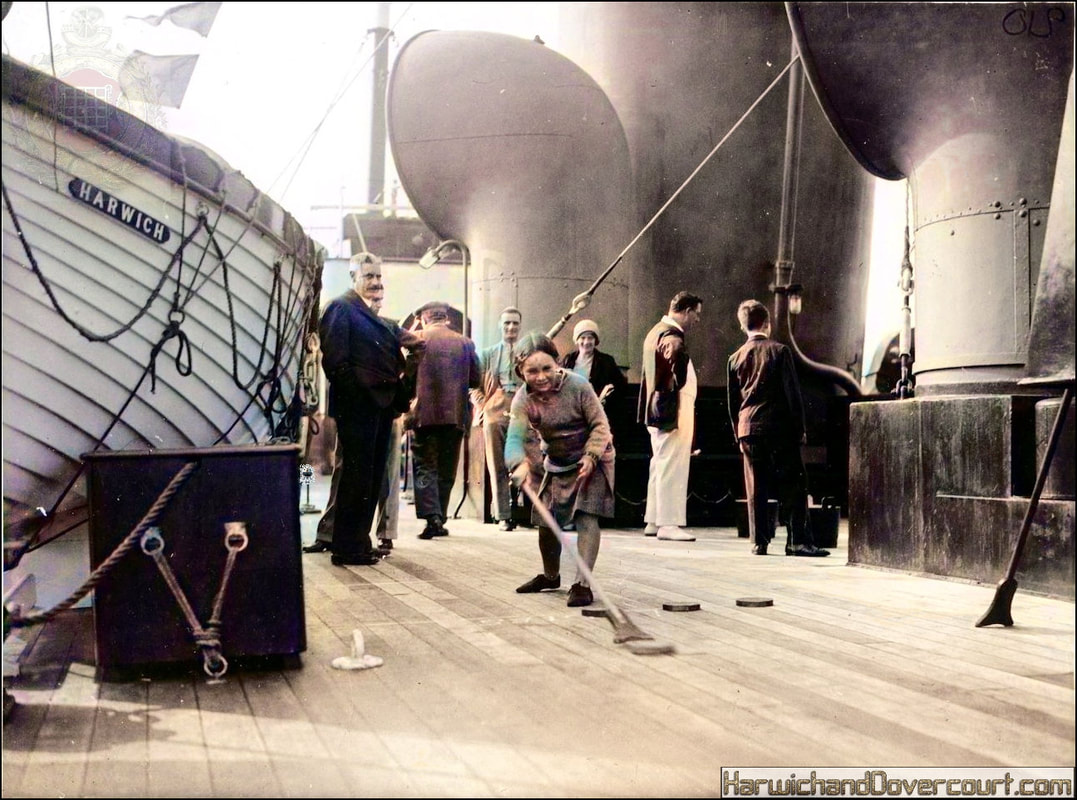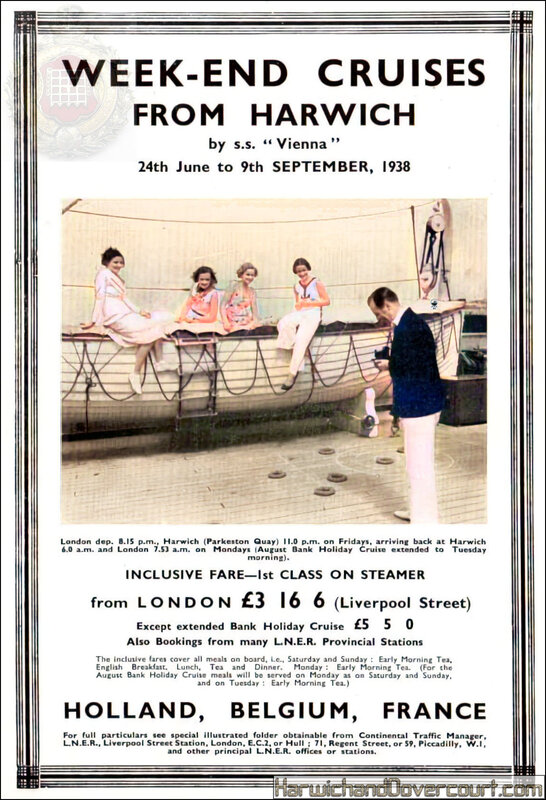Great Eastern Railway Steamer RMS Vienna (1894 - 1930)
&
London & North Eastern Railway Steamer SS Vienna (1929 - 1960)
~ #8601 Great Eastern Railway Steamer Vienna (1900) Edgar Schmitd H&D ~
The R.M.S. Vienna was a passenger vessel built for the Great Eastern Railway in 1894.
History
The ship was built by Earle's Shipbuilding, Hull for the Great Eastern Railway and launched on 18 July 1894. She was launched by Lady Seager Hunt, wife of Sir Frederick Seager Hunt, 1st Baronet, Chairman of Earle's Shipbuilding company. She was the third vessel launched that year from Earl’s Shipbuilding for the Great Eastern Railway after the Berlin on 10 January 1894, and Amsterdam on 24 January 1894.
Initially placed on the Harwich to Hook of Holland route under a foreign flag, she was awarded the Royal Mail contract in 1898 and was then registered under a British flag.
She was transferred to the Antwerp service in 1910.
In 1920 she was renamed SS Roulers when she transferred to the Harwich to Zeebrugge service. In 1923 she fell under the ownership of the London and North Eastern Railway.
She was scrapped in 1930.
History
The ship was built by Earle's Shipbuilding, Hull for the Great Eastern Railway and launched on 18 July 1894. She was launched by Lady Seager Hunt, wife of Sir Frederick Seager Hunt, 1st Baronet, Chairman of Earle's Shipbuilding company. She was the third vessel launched that year from Earl’s Shipbuilding for the Great Eastern Railway after the Berlin on 10 January 1894, and Amsterdam on 24 January 1894.
Initially placed on the Harwich to Hook of Holland route under a foreign flag, she was awarded the Royal Mail contract in 1898 and was then registered under a British flag.
She was transferred to the Antwerp service in 1910.
In 1920 she was renamed SS Roulers when she transferred to the Harwich to Zeebrugge service. In 1923 she fell under the ownership of the London and North Eastern Railway.
She was scrapped in 1930.
~ #73854 Great Eastern Railway Steamer Vienna (1902) H&D ~
~ 9957c Great Eastern Railway Steamer Vienna (1903) H&D ~
~ Great Eastern Vienna (1914) H&D ~
London & North Eastern Railway Steamer SS Vienna (1929 - 1960)
~ TSS Vienna (1929) H&D ~
The S.S. Vienna was a passenger and freight vessel built for the London and North Eastern Railway in 1929.
History
The ship was built by John Brown on Clydebank to replace a ship of the same name Vienna of 1894. She was one of an order for three ships, the others being Prague and Amsterdam. She was launched on 10 April 1929 by Lady Barrie, wife of Sir Charles Barrie of Airlie Park, Broughty Ferry. Lady Barrie was given a diamond and emerald brooch by the builders as a memento of the occasion.
In 1932 she went to the aid of the Malines which had been holed in a collision in the River Scheldt. On reaching the sinking vessel she took on board 131 passengers and their baggage and transferred them to Antwerp.
In 1941 the ship was requisitioned by the Ministry of War Transport and served time in the Mediterranean Sea off Algiers and Bari. In 1945 she returned to become a permanent leave ship for the British Army of the Rhine between Harwich and Hook of Holland.
She was withdrawn in 1960 and scrapped in Ghent.
History
The ship was built by John Brown on Clydebank to replace a ship of the same name Vienna of 1894. She was one of an order for three ships, the others being Prague and Amsterdam. She was launched on 10 April 1929 by Lady Barrie, wife of Sir Charles Barrie of Airlie Park, Broughty Ferry. Lady Barrie was given a diamond and emerald brooch by the builders as a memento of the occasion.
In 1932 she went to the aid of the Malines which had been holed in a collision in the River Scheldt. On reaching the sinking vessel she took on board 131 passengers and their baggage and transferred them to Antwerp.
In 1941 the ship was requisitioned by the Ministry of War Transport and served time in the Mediterranean Sea off Algiers and Bari. In 1945 she returned to become a permanent leave ship for the British Army of the Rhine between Harwich and Hook of Holland.
She was withdrawn in 1960 and scrapped in Ghent.

